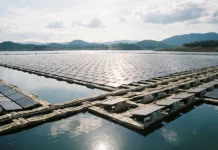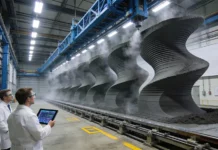The PUMA1 lab, located at the National Institute of Solar Energy (INES) in southeastern France, has undergone a restructuring to become a research facility focused on smart grid technology. Rebranded as the ‘Grid Control Lab,’ this facility, situated in Le Bourget-du-Lac near Grenoble, is specifically designed for studying grid management in the context of integrating renewable energies, battery and hydrogen storage, and electric mobility on a large scale.
The primary objective of the new lab is to facilitate the testing of innovative concepts, including DC and medium voltage distribution networks, within a controlled environment before their implementation in real-world scenarios. A significant emphasis will be placed on converters, which play an increasingly vital role in directing and regulating the flow of power within decentralized production and storage grids.
With a connection to the 20kV grid and the ability to operate at voltages up to 3kV in DC, this new platform facilitates the design, development, and testing of converters capable of handling megawatt-level power. It employs real-time piloted simulation systems and high-frequency monitoring to create models of smart microgrids that incorporate these converters.
The laboratory is interconnected with conventional network components such as generators, photovoltaic systems, and storage systems, providing a representative scale of the challenges anticipated in the coming years. The lab’s opening announcement, now under the administration of the French research organization CEA, declares that mastering converters in a smart electrical network are as crucial as controlling valves in a hydraulic network.
In recent months, the Grid Control Lab has become the second new testing facility in France. In September 2022, the School of Large Projects (ESTP) established a smart grid test bench at its Cachan campus in collaboration with engineering company VINCI Energies. This facility, designed on a scale equivalent to a block or district, primarily serves the purpose of training and raising awareness among future engineers.
In addition to supporting other laboratories and research centers, the ESTP smart grid test bench also serves as a tool for manufacturers to select infrastructures and equipment that promote the transition to clean energy.









































